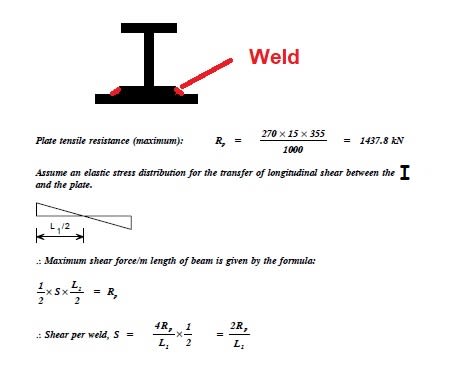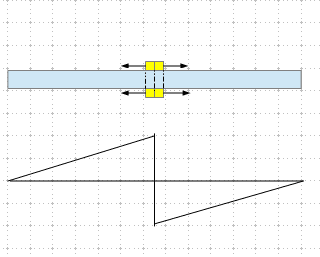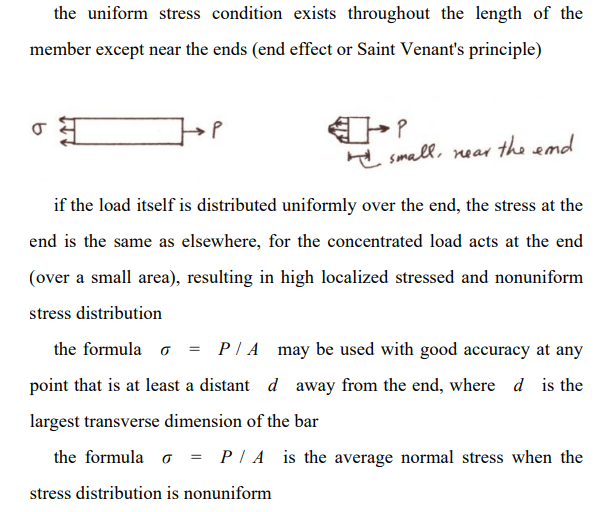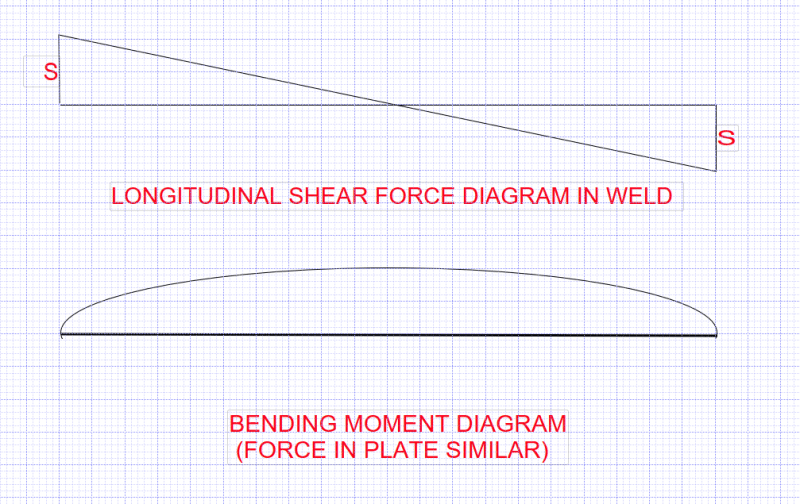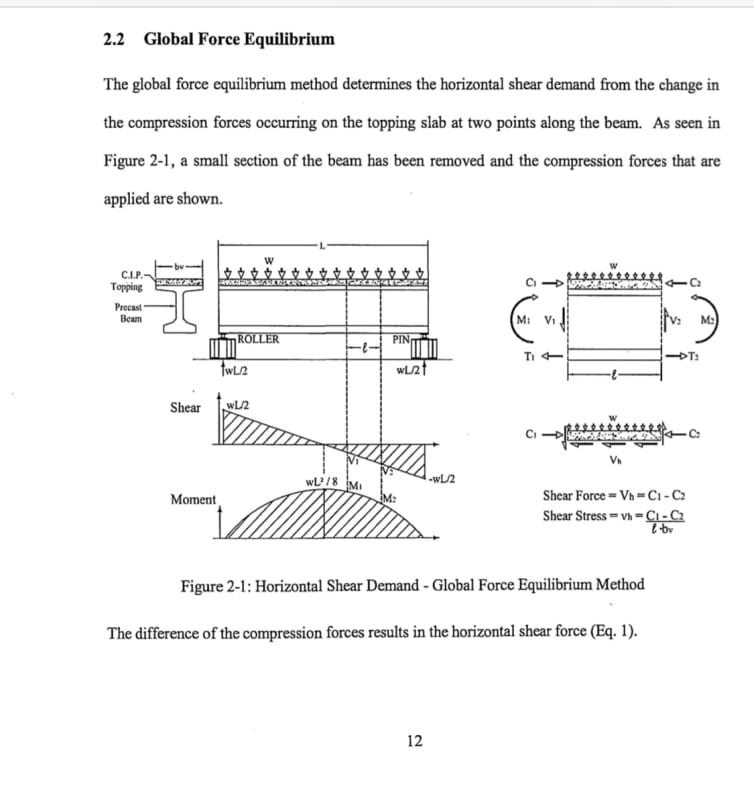Thanks for your answers folks.
I’ve got the following answer from a Boss.
“The maximum tension in the plate is 1437 kN, at midspan. So we know the maximum longitudinal force. This longitudinal force must be transferred between the plate and member. This is clearly conservative, as perhaps the plate is not fully stressed.
The next question is how is the stress distributed over half the span? It must have all transferred by the time you reach the end of the member. One could assume a uniform distribution, and simply divide force by length. That would mean a plastic distribution, and welds are notoriously not plastic. So an elastic distribution was chosen, zero at midspan and rising to some other value, S at the ends.
In compound sections, there is clearly no desire for “slip” between the two plates at midspan. This force (if you like, a desire to slip) is a maximum at the ends,this assumes a triangular distribution of force over half the span.
The maths is then simply working out what the maximum ordinate of this triangle is, S at the end, and simply saying the maximum longitudinal stress is equal to that value, and thus designing the weld for that value. It seems conservative and reasonable to me.”
BAretired you’re completely correct.
Thanks
